 String instruments are unique in that the hand positions aren’t static, you eventually will have to move them up or down the fingerboard or fretboard. In all the disciplines in orchestra and in your fretted classes most if not all the method books start in first position. You can do a lot of learning in first position, but eventually to play and perform higher level music eventually moving out of first position will be required. Here are some exercises that are fun to get them moving up and out of first position.
String instruments are unique in that the hand positions aren’t static, you eventually will have to move them up or down the fingerboard or fretboard. In all the disciplines in orchestra and in your fretted classes most if not all the method books start in first position. You can do a lot of learning in first position, but eventually to play and perform higher level music eventually moving out of first position will be required. Here are some exercises that are fun to get them moving up and out of first position.
For the orchestra ensemble, where frets don’t get in the way, sirens are a good way to start. Have your players on their first finger move it up and down the fingerboard while bowing to create a glissando or siren type effect. This is particularly effective with second- or third-year players. This exercise can be repeated on all the fingers. Eventually cut the sirens down to a shift from a position to another position like first to third, or first to fourth.
In your fretted classes a good way to start is just some standard noodling on each of the frets. Have them on all strings go between first and third fret with first and third finger, then have them do the same pattern starting on second fret. This is a great way to reinforce note reading or ear training. When they get to third fret, show them that the fifth fret is the same as the string above it (except for the G to B string of course!). This will help their proprioception (SBO+: “your body’s ability to sense movement, action, and location) on the instrument and build that muscle memory.
The next step is to of course back it up with exercises or music that use the techniques that you have been working on. For orchestra, Richard Meyer has a great piece called “Night Shift” that gets everyone shifting, perfect for late second to third year players. In the guitar classes I particularly like songs that use F-sharp on the D string, songs like “Danny Boy” or “House of the Rising Sun” (which also has a D Sharp in the version I use). Most method books have versions of both of those songs in which some upper fret work is used.
Hopefully with the techniques listed above you can get your classes moving on up!
Lesley Schultz currently teaches secondary general music and orchestra at Princeton City Schools (Cincinnati, OH). She is a member of TI:ME (Technology In Music Education) and serves on the National Conference Committee.








